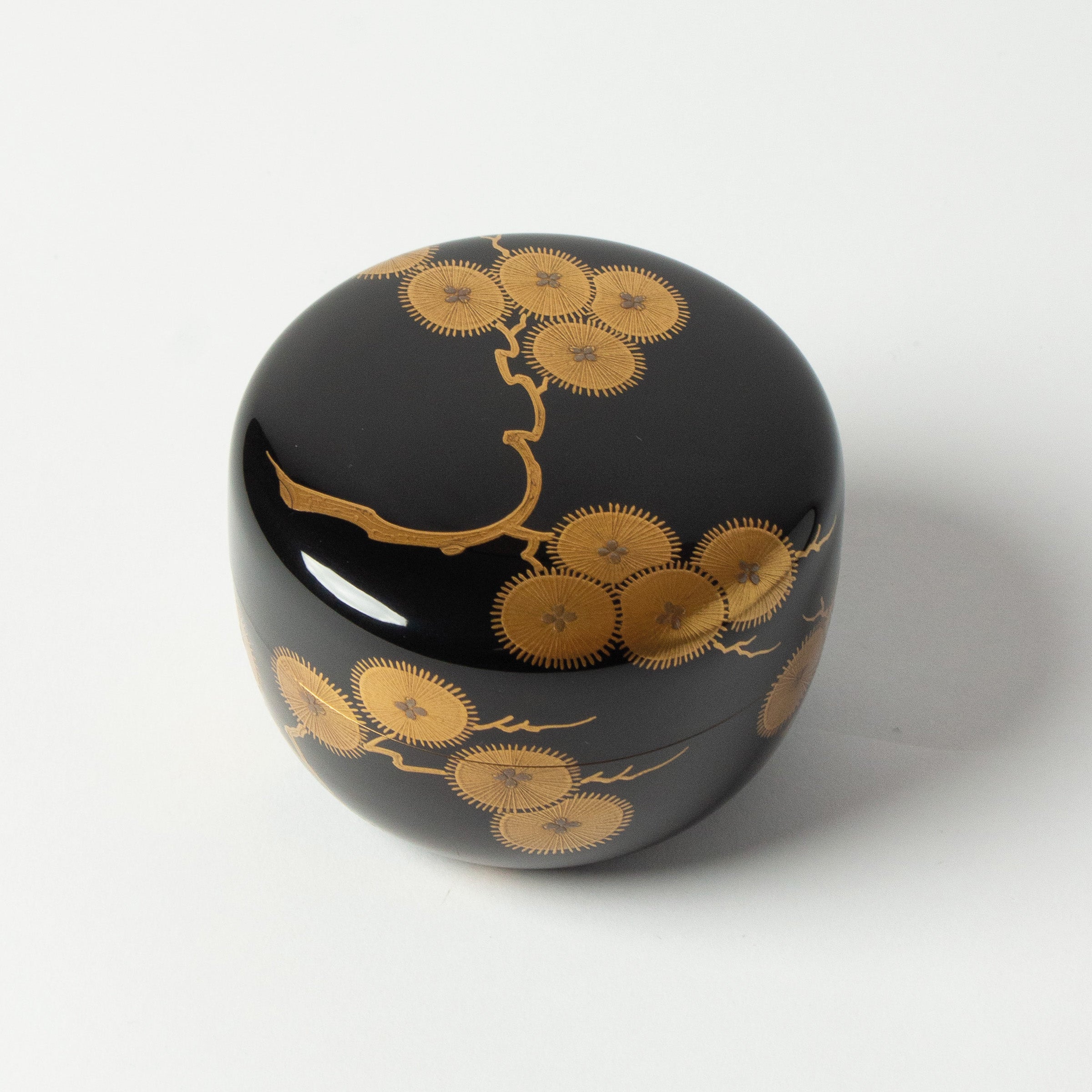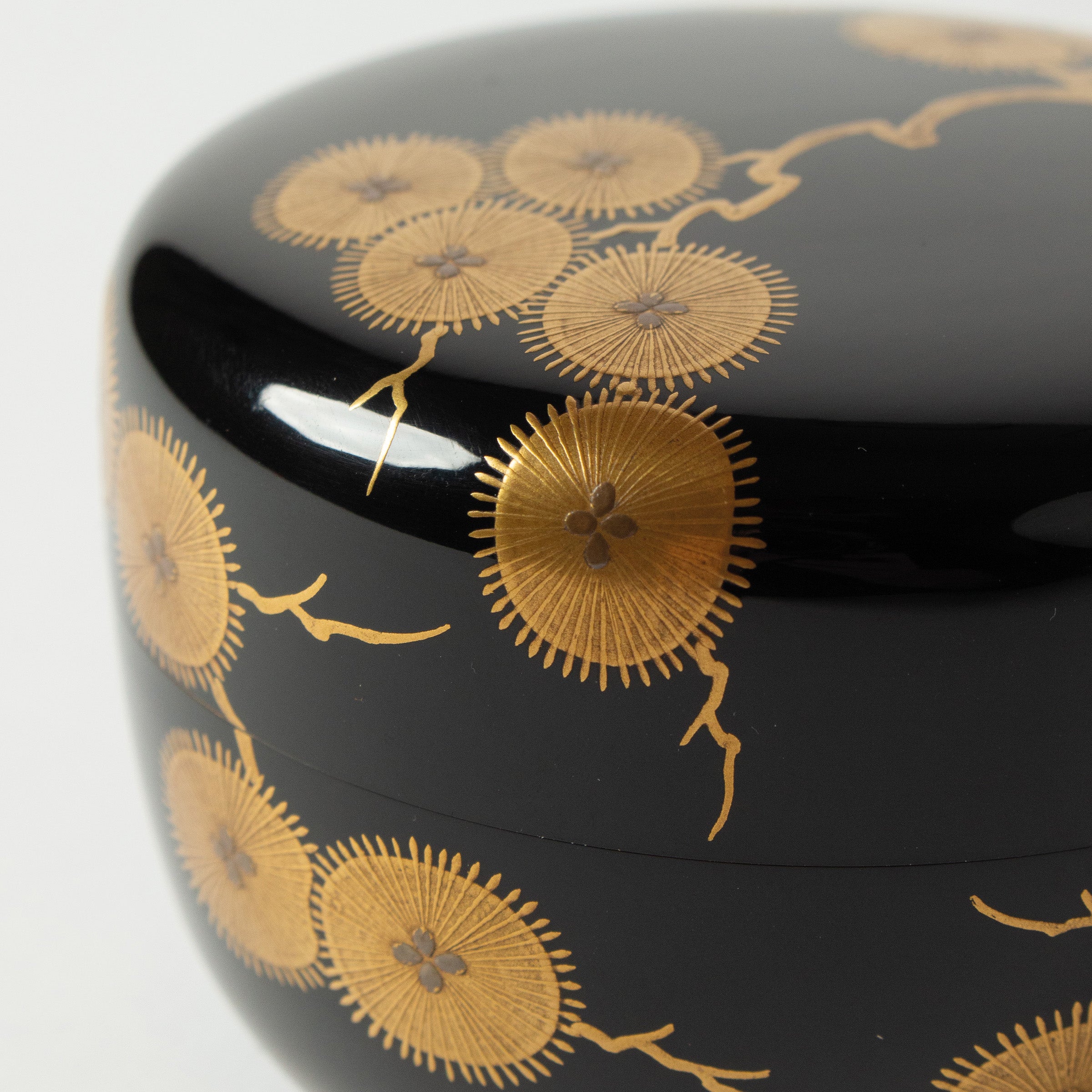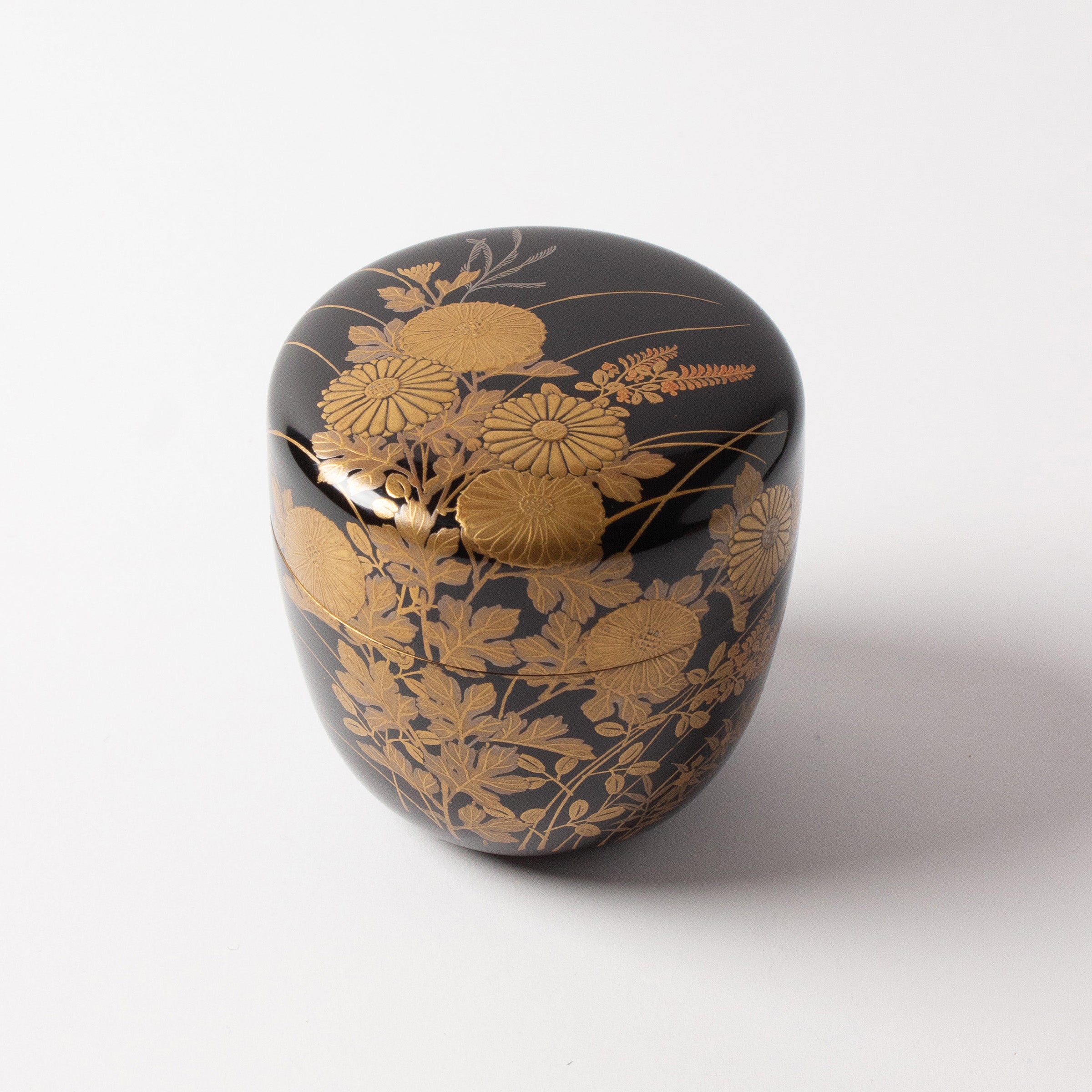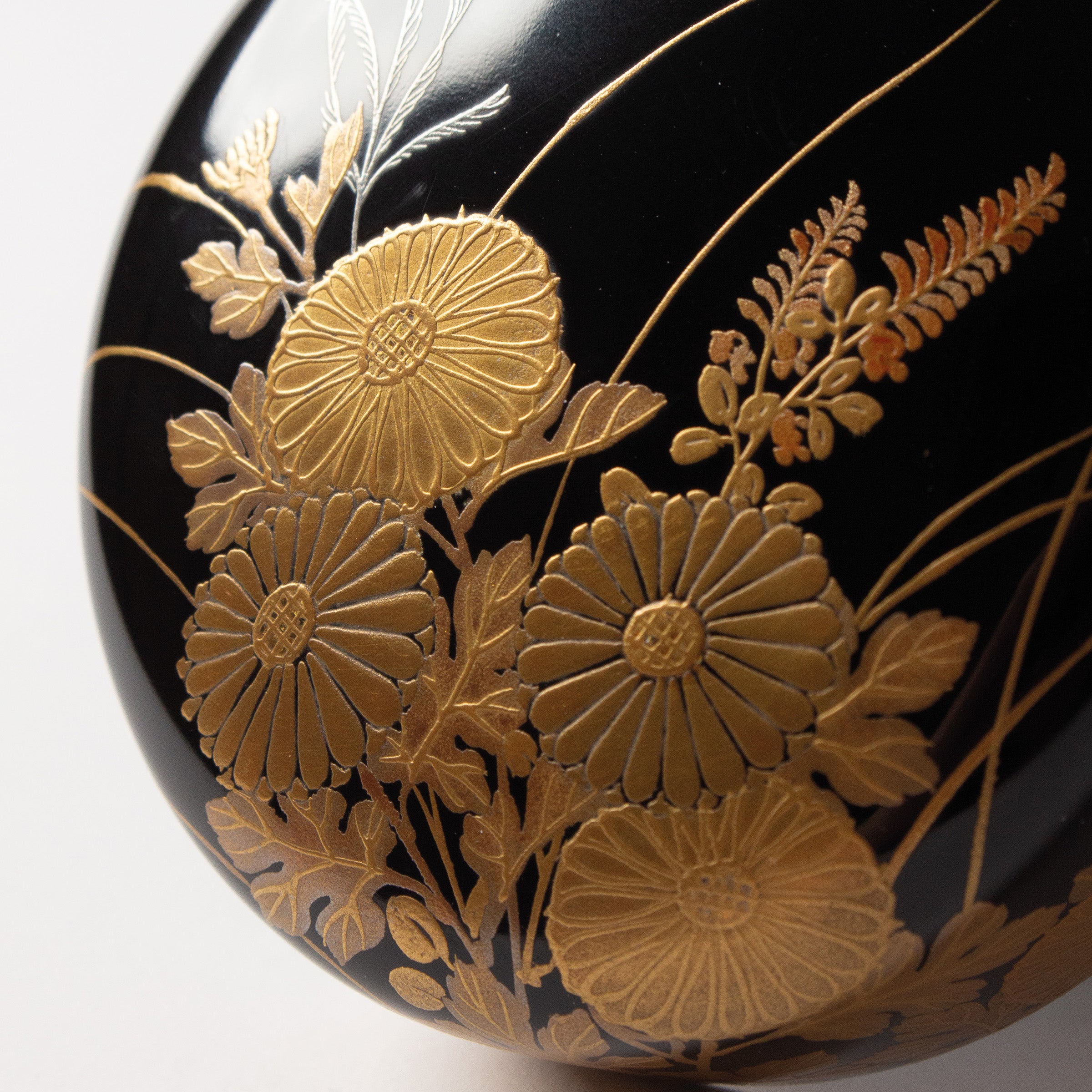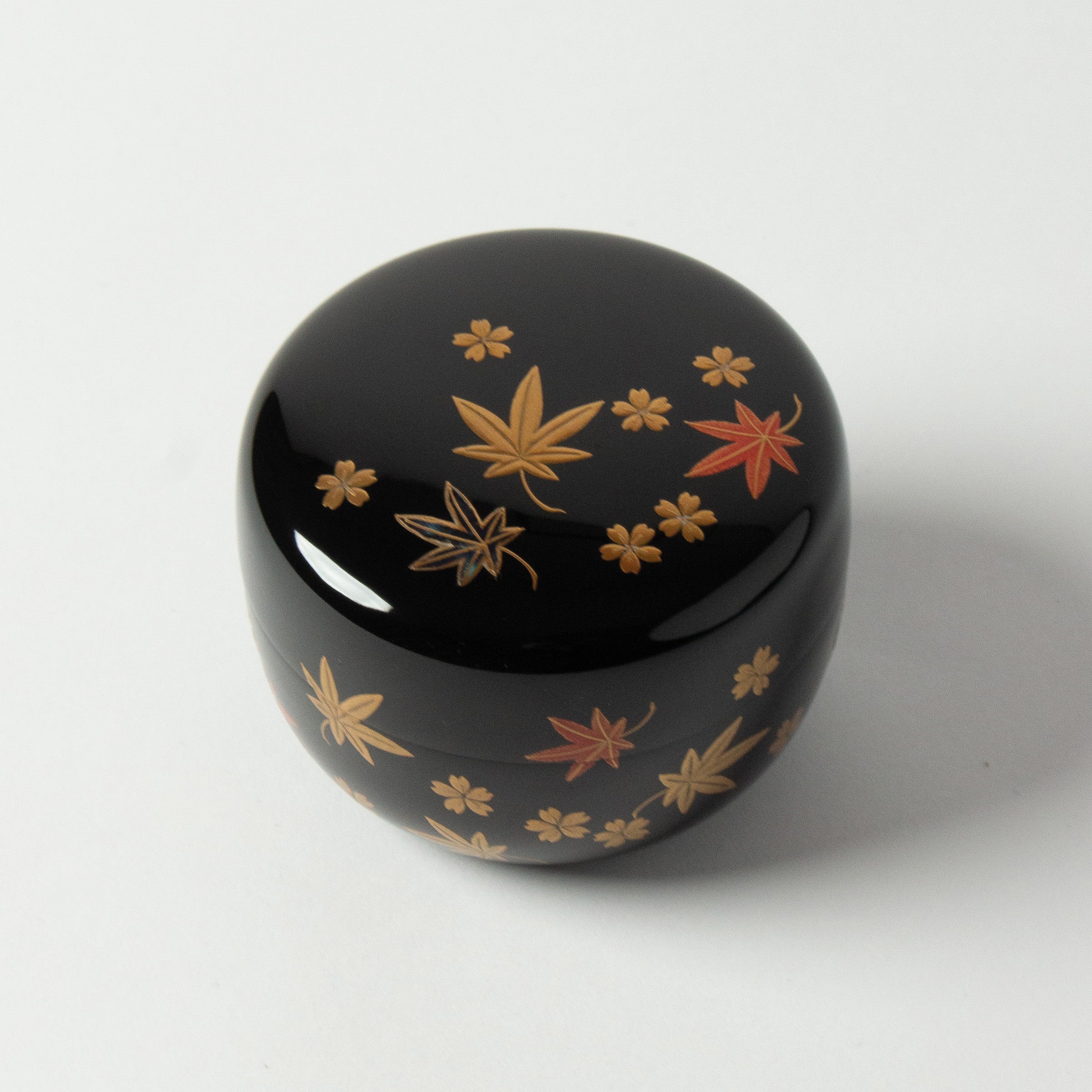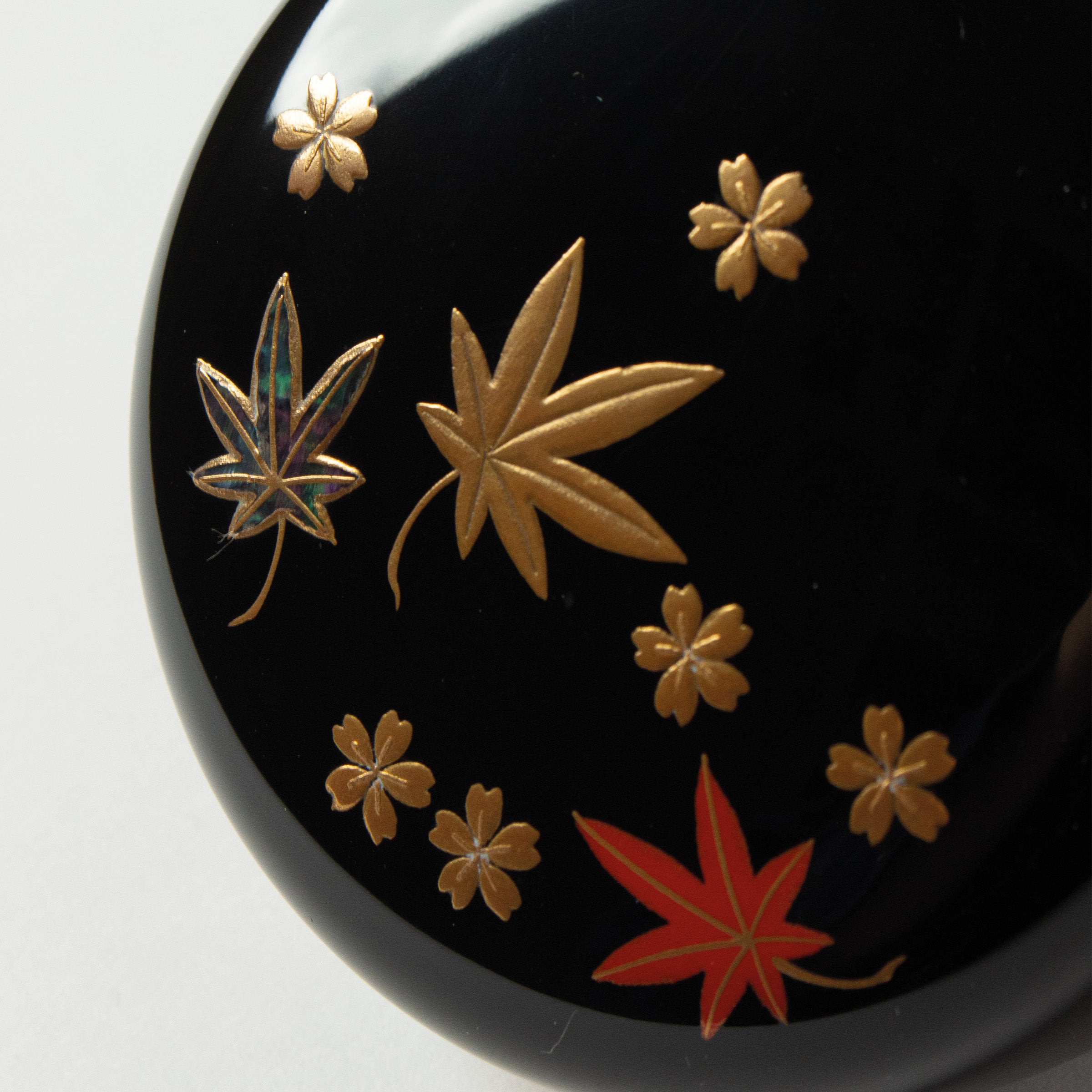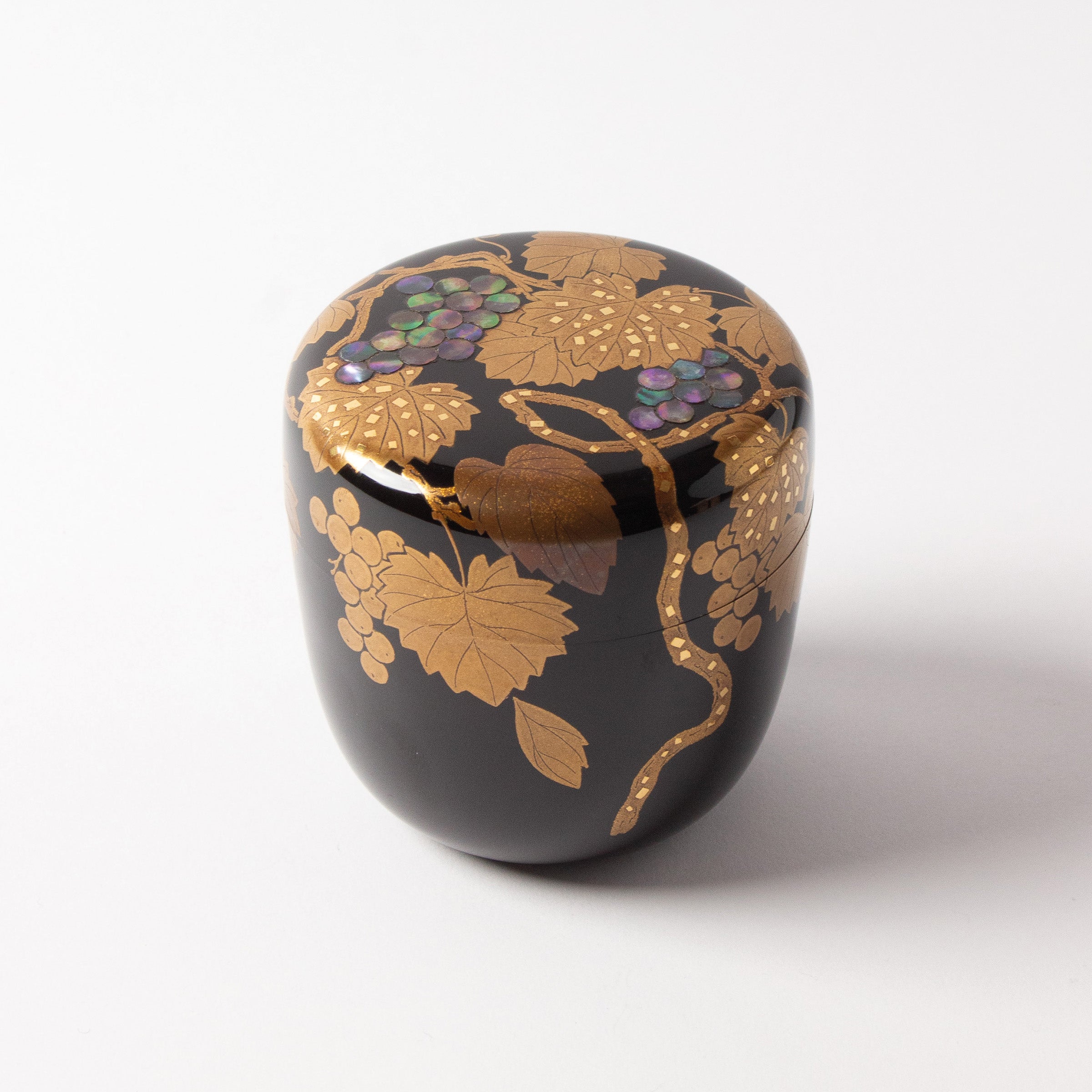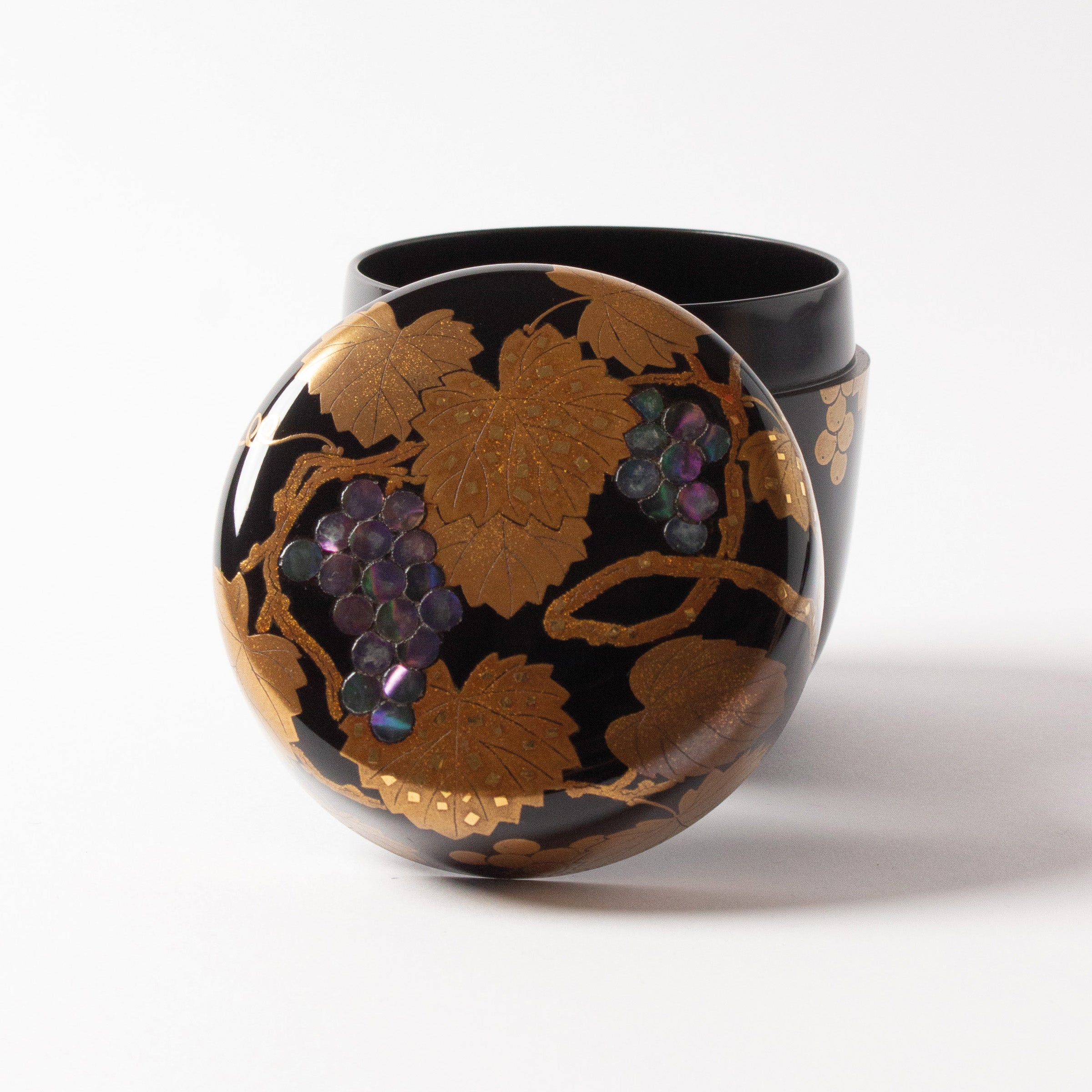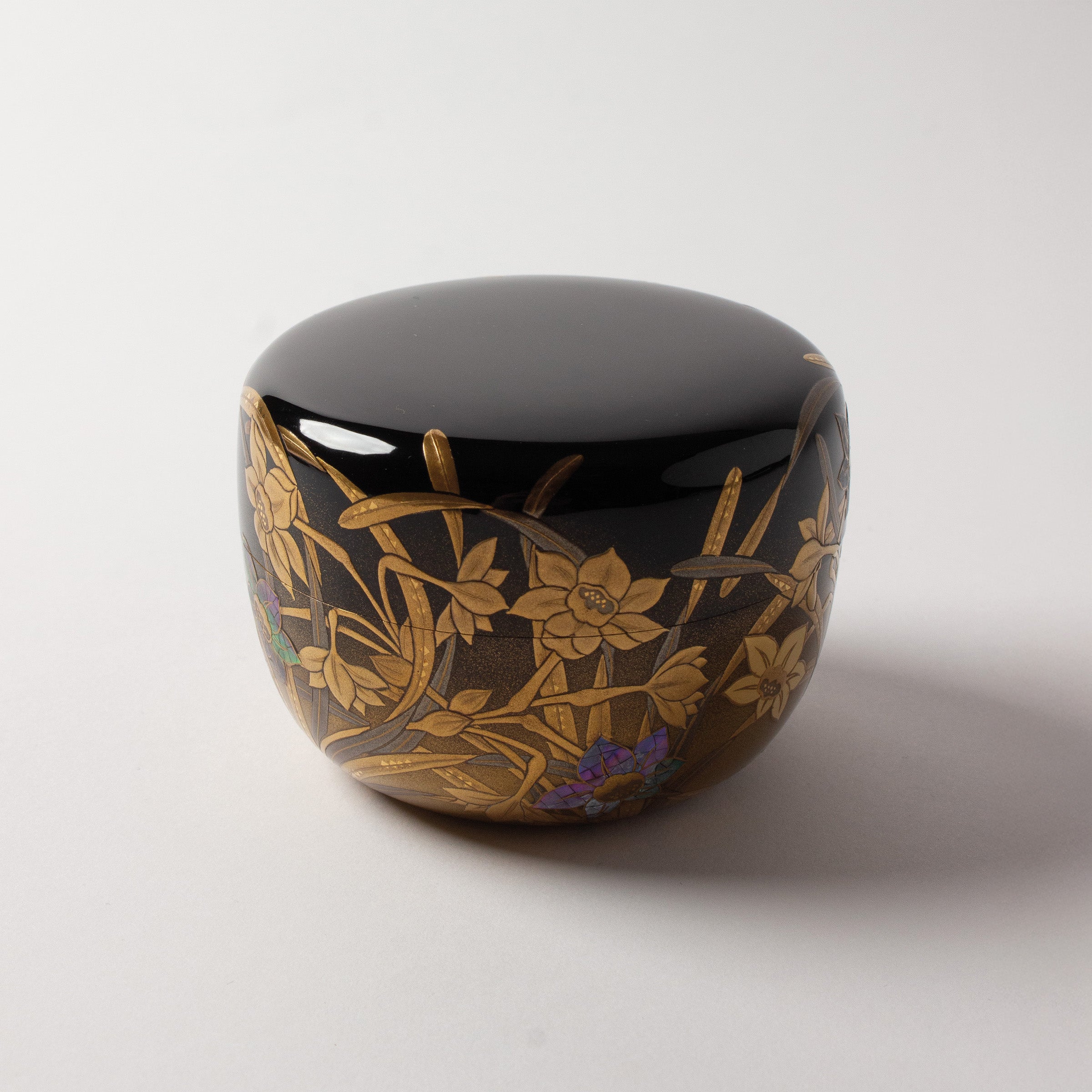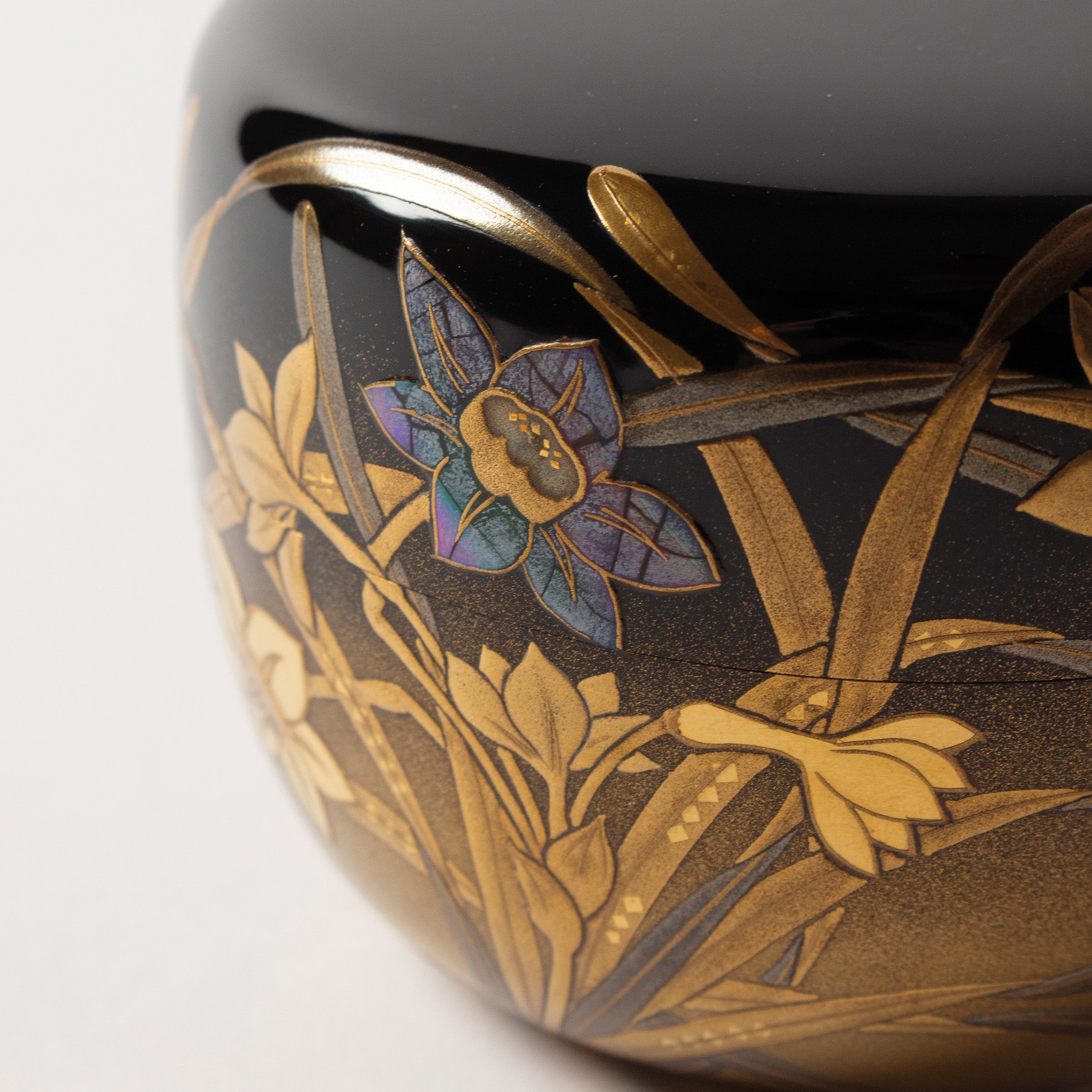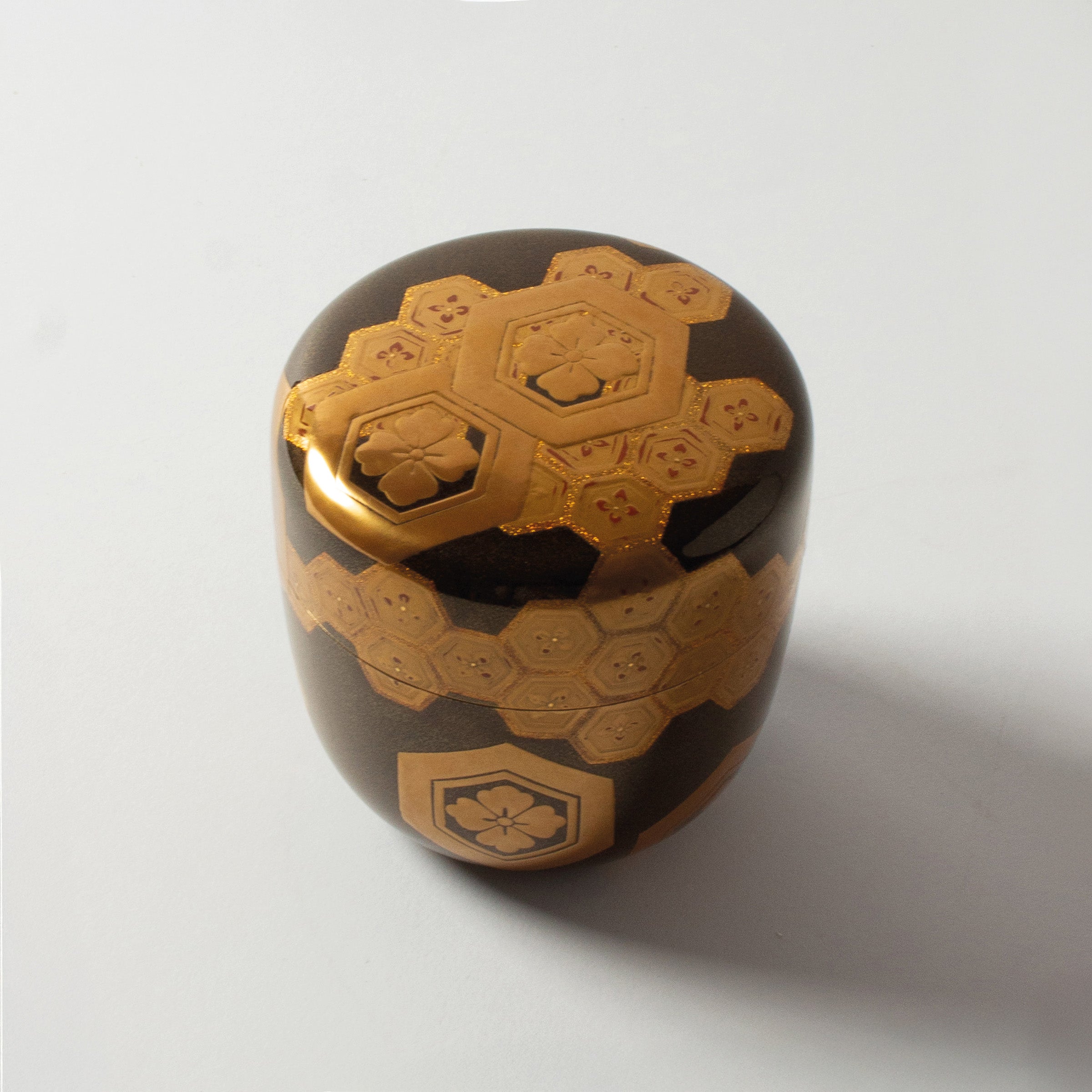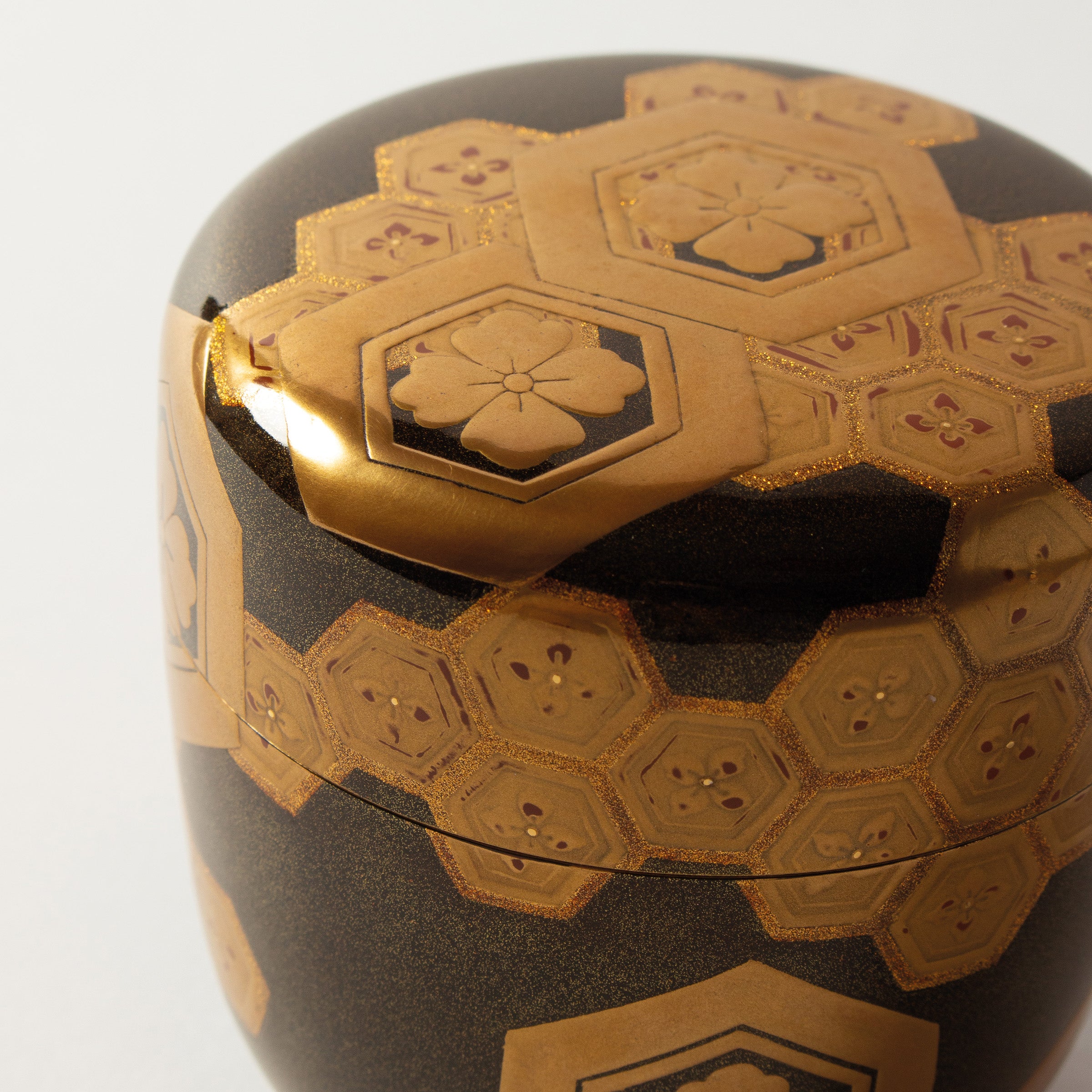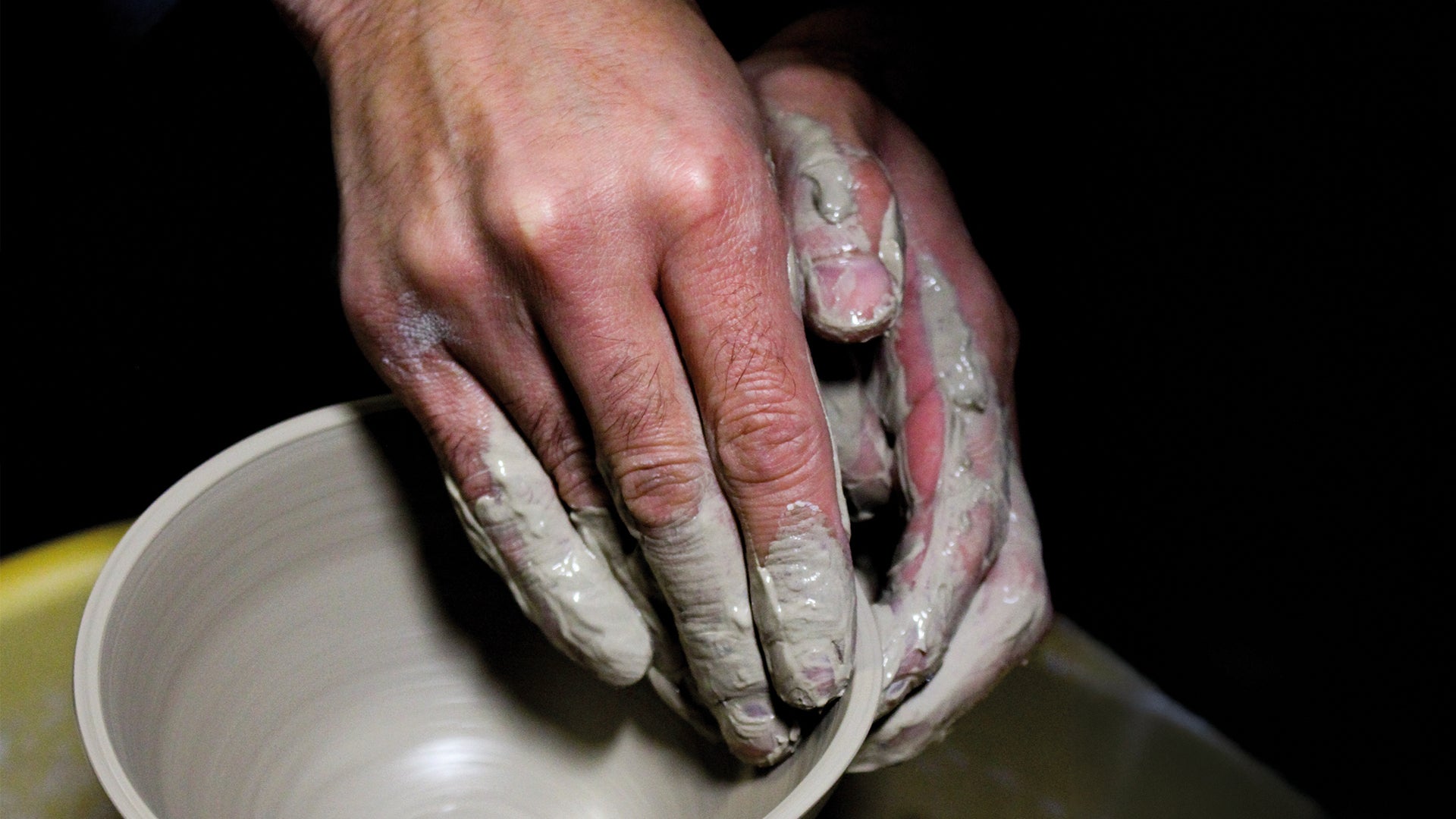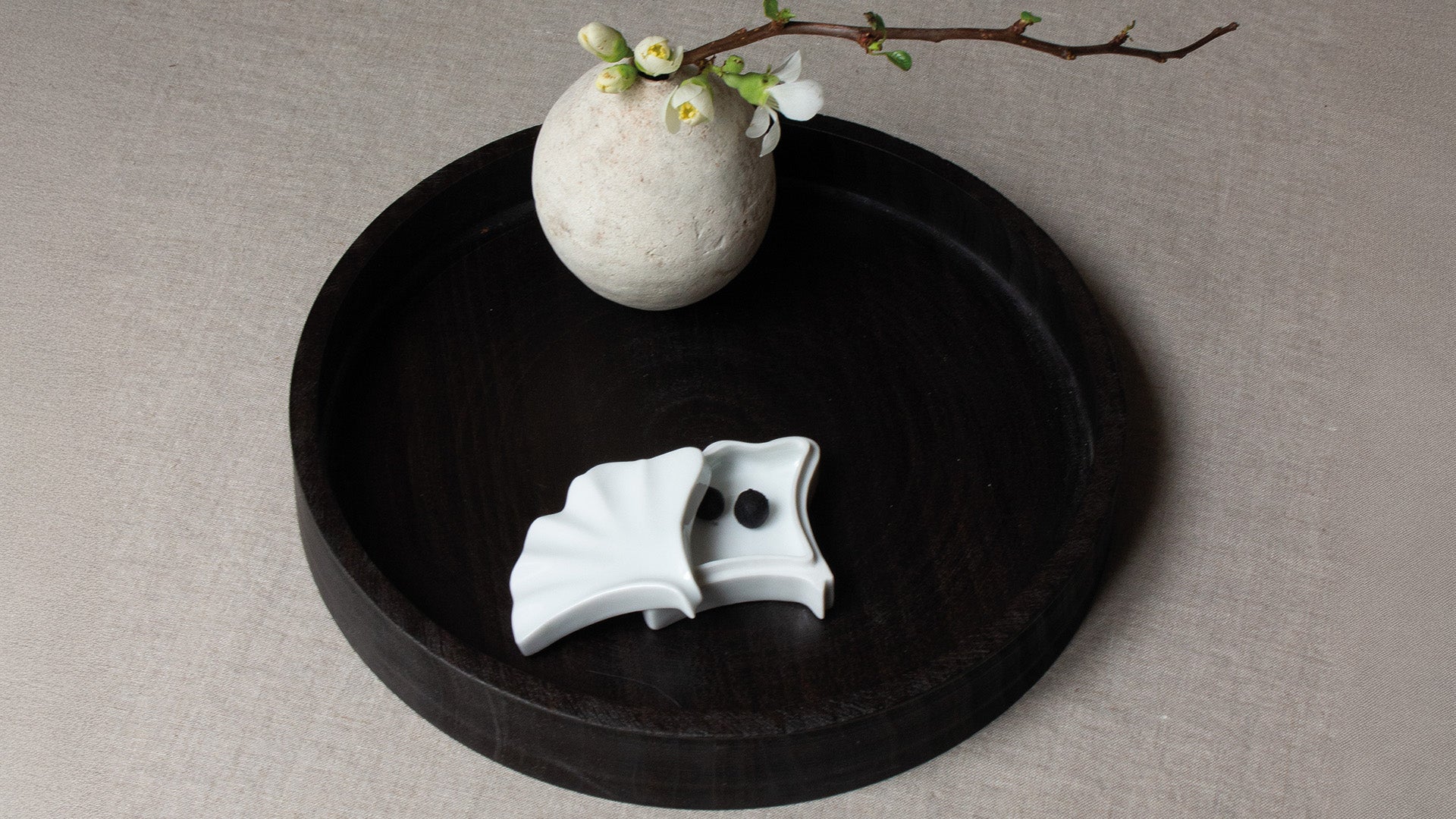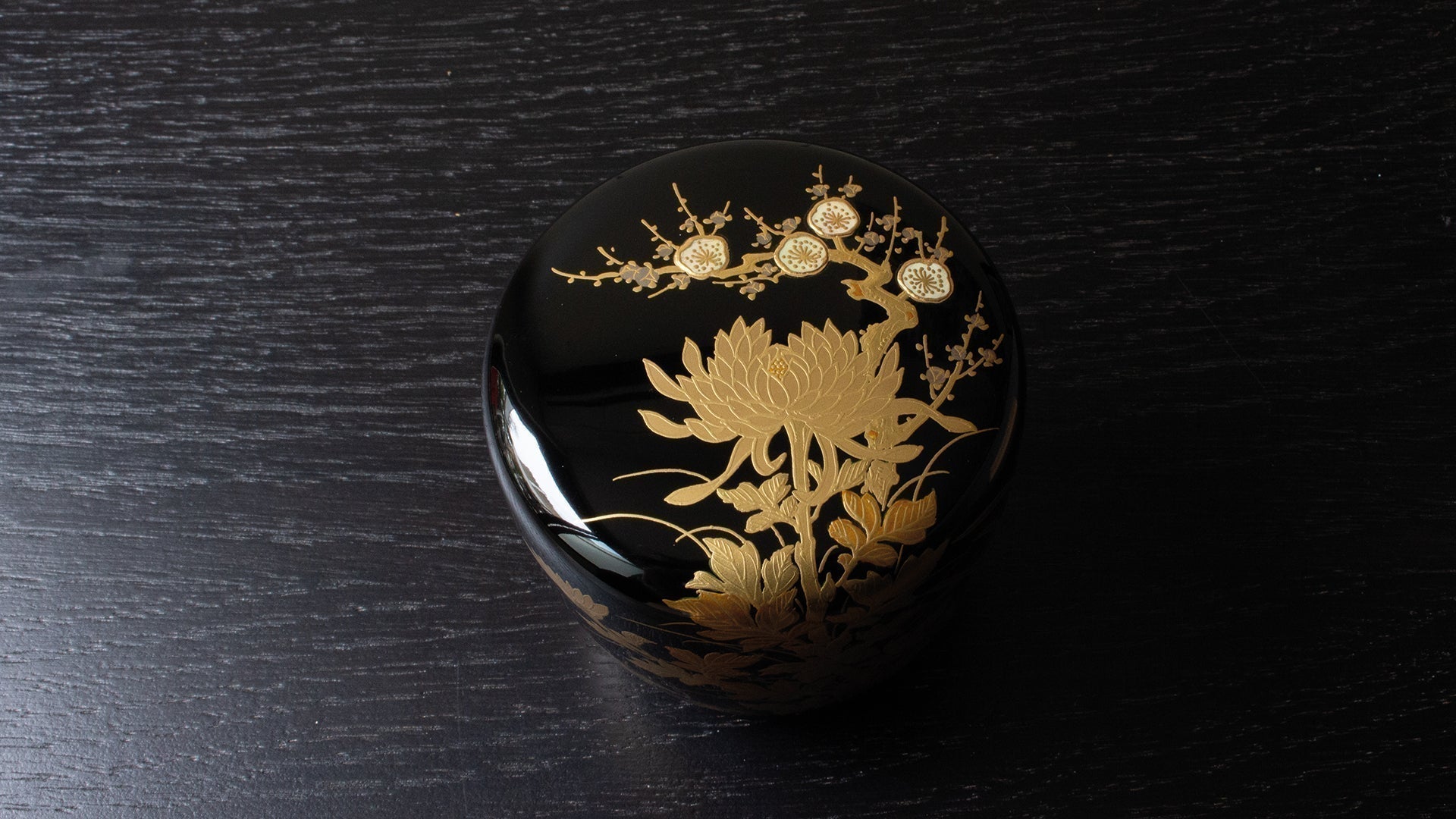
Natsume, the poetry of patterns in the tea ceremony
In the Japanese tradition of chanoyu (茶の湯, the tea ceremony) , each object has a precise meaning and a carefully thought-out aesthetic. The natsume (棗) , a small lacquer box intended to contain the matcha (抹茶) powder, is one of the essential elements of this ceremony. More than a simple container, it is a reflection of the season, the refinement of the host or hostess and the spirit of the moment shared with the guests.
However, as its form is very codified, so without much surprise, it is not simply the signature of the craftsman who made it that makes it a precious object, but also the spirit and style of its decoration . Through maki-e (蒔絵, gold or silver powder decoration on lacquer), raden (螺鈿, mother-of-pearl inlay) or nashiji (梨地, shimmering gold background) , each motif, from the simplest to the most sophisticated, has a very thoughtful meaning and reinforces the harmony of the ceremony.
Why are these patterns so sophisticated and symbolic? Why do tea schools favor certain styles? To understand this, we must place natsume in its fundamental role in the ritual of light tea (usucha, 薄茶) .

Natsume: a central object of chanoyu
Natsume takes its name from the shape of the fruit of the Japanese jujube tree (棗, natsume) . Used for light tea (usucha, 薄茶) , it is distinguished from chaire (茶入, ceramic tea pot) , reserved for thick tea (koicha, 濃茶) .
Its role is much more than utilitarian :
- It houses the matcha , guaranteeing its conservation and its aesthetics (the contrast of the luminous green on the black lacquer is striking!) before being removed with the chashaku spatula (茶杓) .
- It embodies the season , because depending on the time of year, its size, shape and patterns change.
- It reflects the identity of the host , revealing his taste and aesthetic sensitivity.
- It contributes to the visual harmony of the ritual , where each utensil must match the whole.
Holding the natsume during the tea ceremony
During temae (点前, tea preparation) , the natsume is handled with care and reverence . The host or hostess gently grasps it with both hands, with the fingers slightly curved under the base and the thumbs resting on the sides. Before opening it, he or she often makes a fluid gesture to rotate it slightly , showing respect for the object. After scooping out the matcha with the chashaku (茶杓) spatula, he or she closes the lid with a precise and silent movement, before elegantly replacing it on the tatami or chadōgu (茶道具, tea utensil set) tray.
Once the tea has been served and consumed, comes the moment of haiken (拝見, respectful contemplation) , where guests can take the natsume in hand to observe the finesse of its decoration and appreciate the work of the craftsman. This gesture, marked by respect, allows us to better understand the aesthetic and symbolic importance of this object in the tea ceremony.
The attention paid to gestures and the way in which the natsume is presented thus reinforces the meditative rhythm of chanoyu , where each action has an intention.
Why are natsume settings so important?
The decoration of a natsume does not only serve to embellish it , it has a symbolic and aesthetic function which amplifies the meaning of the tea ceremony.
- Create a seasonal atmosphere → Each motif is chosen according to the season, reinforcing the connection between nature and ritual.
- Expressing wabi-sabi (侘寂) → Certain deliberately patinated or refined decors express beauty in imperfection and refined simplicity.
- Demonstrating harmony between elements → The aesthetics of chanoyu is based on the relationship between objects, the setting and the moment.
- Honoring Tea Schools → Some schools have preferences in patterns and ornamentation, reflecting their philosophy.
- A craftsman as a conveyor of meaning → Natsume motifs are not mere ornaments; they are an interpretation of time and the moment by the craftsman . Each master lacquerer transposes, through maki-e , nashiji or raden , a dialogue between tradition and personal vision.
In this way, the craftsman does not just create a functional object, he infuses each motif with a silent poetry , where gold and lacquer capture the seasons and emotions of the chanoyu.
This is why, during the haiken (拝見, contemplation of the utensils after the ceremony), a natsume signed by a recognized master can become an object of admiration and exchange between the guests. Observing the finesse of the work, recognizing the style of a famous craftsman or simply feeling the emotion that he wanted to convey is part of the aesthetic pleasure of chanoyu.

The most common motifs and their meaning in chanoyu
Floral and plant motifs: the cycle of the seasons
| Pattern | Japanese name | Symbolic |
|---|---|---|
| Cherry Blossoms | Sakura | Ephemerality, renewal of spring |
| Red maple | Momiji | Transition, melancholy of autumn |
| Autumn Herbs | Akikusa (Akikusa) | Ephemeral season, elegance of the passage of time |
| Chrysanthemum | Kiku | Longevity, wisdom, imperial nobility |
| Plum tree in bloom | Ume (Ume) | Resilience, winter renewal |
| Glycine | Fuji | Elegance, nobility |
| Weeping willow | Shidare-yanagi | Flexibility, mystery, spirituality |
| Iris | Shōbu (Shobu) | Protection, strength, courage |
| Peony | Botanic Garden | Wealth, prestige, feminine beauty |
| Bindweed | Asagao (Asagao) | Fleeting life, morning wonder |
| Camellia | 椿 (Tsubaki) | Purity, refinement, winter |
| Lotus | 蓮 (Hasu) | Spiritual purity, connection with Buddhism |
Natural and atmospheric motifs: the fluidity of time
| Pattern | Japanese name | Symbolic |
|---|---|---|
| Moon | 月 (Tsuki) | Serenity, cycles of time |
| Haze | 霞 (Kasumi) | Mystery, evanescence of the world |
| Stylized waves | 波 (Nami) | Fluidity, perpetual movement |
| Mount Fuji | Fujisan (Fujisan) | Harmony, spiritual perfection |
Animal motifs: the symbols of Japan
| Pattern | Japanese name | Symbolic |
|---|---|---|
| Crane | 鶴 (Tsuru) | Good omen, longevity |
| Tortoise | Kame (Kame) | Wisdom, immortality |
| Rabbit | 兎 (Usagi) | Agility, connection with the moon |
| Butterflies | 蝶 (Chō) | Transformation, ephemerality |

The influence of tea schools on natsume decorations
Japanese Tea Schools and Their Influence
Chanoyu is not based on a single tradition, but on several schools that have each developed their own style over the centuries. These schools, founded by influential tea masters, transmit distinct philosophies of the ritual, thus influencing the choice of utensils, their form, their decoration and their use . Each school favors a particular aesthetic, some seeking the rustic simplicity of wabi-sabi , others emphasizing more refined ornaments.
Thus, the decorations of the natsume vary according to the codes and sensibilities specific to each school , reflecting their vision of tea and the moment of sharing that it represents.
Decorative preferences according to tea schools
| School | Aesthetic preferences |
|---|---|
| Urasenke (裏千家) | Delicate maki-e decorations, often inspired by the seasons and nature. |
| Omotesenke (表千家) | Favors sober and discreet decorations , with golden nashiji finishes. |
| Mushakouji-senke (武者小路千家) | Appreciates objects with a rustic style , sometimes deliberately patinated. |
| Regional schools | Some local schools favor motifs related to their region, such as Mount Fuji for schools in Shizuoka . |
The use of a natsume decorated with a specific pattern may even reflect an homage to a family tradition, a tea master, or a specific season , making each choice deeply meaningful.

Natsume, mirror of patterns and seasons
Natsume is therefore not just a simple container for matcha tea powder , it is a work of art where the season, nature, history and the soul of the tea ceremony come together. Through its sophisticated decorations , it tells a silent story , perceptible only to those who know how to read its language.
But beyond its motifs, natsume is also an extension of the craftsman's gaze : it translates an atmosphere, a season, a fleeting moment through lacquer. Its choice in the ceremony is not random: it embodies a dialogue between the creator, the host and the guest , uniting all the participants in the same moment of contemplation.
So, choosing a natsume for a ceremony is not a trivial gesture: it is an invitation to feel the moment , to understand the cycle of time and to appreciate the refinement of Japanese know-how.
You can discover our selection of rare and precious natsume at the bottom of this page or by clicking here .


